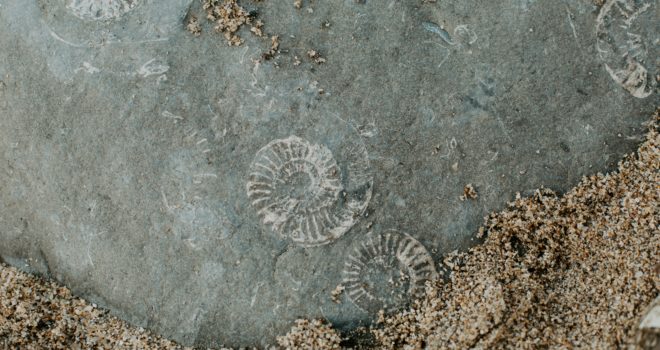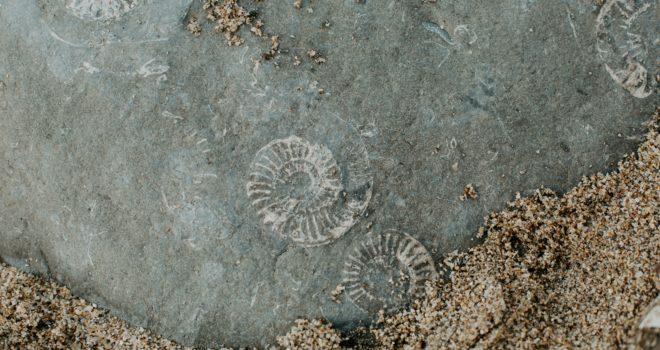This is the sixth article in a new nine-part series entitled “Evidence for Agnostics.” New articles in the series will be published each Monday.
The dominant scientific paradigm, when it comes to the origin and development of organic life, particularly human life, is evolution. But, what is evolution? And what constitutes its supportive evidence for its claims of scientific truth and the power of its widespread acceptance?
Well, one of its crucial ideas is the accidental nature of its operative paradigm. For all changes that are observed or inferred through fossil records and laboratory experiments are based on totally physical processes. A mechanistic process that is only altered by sheer chance through fortuitous mutations and climatic adaptations that enhances environmental suitability and sustainability of all forms of organic life including human beings.
But within these sciences, there is not a universal view of this adaptive evolutionary development. For instance, there are those who lean more on “gradualism” as the exclusive or most prominent process for such evolutionary changes and scientific conclusions. And, there are others who weight their views of evolution toward “catastrophism” because they see ample fossil evidence indicating some radical or significant events that represent crucial changes in environment or more serious leaps in adaptive mutations.
For some scientists see in the gaps of fossil and physical evidence a certain leap in adaptive advantage that can only be inferred from such gaps in the physical evidence. And, this leads many such scientists to grapple with the complexity of both perspectives. For the evidence seems to support some synthesis of both gradualism and catastrophism.
But, these two general orientations and the many nuances of their various syntheses still have a strong bias that arises of necessity from their materialistic emphases about what constitutes evidence. For such secular scientists fail to even consider any possibility of a form of “orchestrated” development operating on the physical cosmos and its many organic manifestations and their developed sophistications and subtleties.
And that presents them with a persistent problem. They must accommodate for gaps in the chain of anticipated evidence affirming some form of gradual change in the direction of expanding sophistication. And, all this arises from their mechanistic assumptions based on their bias toward physical evidence as the sole source of real data. For them, the only evidence is physical evidence.
So, if there is no physical evidence, then there is no evidence. But, for those who recognize the nature of rationality as an important power in science, other possibilities present themselves. Not only that, but when we take a real close look at the nature of the processes and the real expanse of what is necessary to acquire a true adaptive advantage, the case for gradualism and catastrophism is markedly weakened, if not overturned.
Just think about the possible complexities of what constitutes a real adaptive advantage. And, think about what changes go into the creation of such advantages. And, what such significant advantageous changes can have on a broader ecosystem. Think about a systems perspective in different climactic conditions. Think about the systemic nature of adaptive advantage within a particular species and think about how some fortuitous mutation of a singular member of that species could supplant the typical traits of the entire species over time.
What is the probability of such mechanistic changes actually occurring frequently enough to change the entire nature of a given species? And, what is the probability such a singular change would manifest in the full range of all species across the length of time for which physical evidence is available?
Just thinking about the likelihood of the full range of adaptive changes occurring over the expanse of time since the first organic entity somehow appeared from the singular reality of inorganic matter leads us back to a probability of something akin to Penrose’s Number (1 in 1010/123). This probability has are more zeroes there are molecules in the cosmos. For that probability is manifestly infinitesimal, even impossible.
But, let’s take a closer look at what some scientists see when they look closely at the nature and complexity of any adaptive advantage, particularly from a systems perspective. For many such acquired advantages require multiple changes occurring simultaneously in order for there to actually be any real adaptive advantage that really accrues from singular or simultaneous random mutations.
Two broad principles are crucial to understanding a real adaptive advantage. First, for any mutation that is truly a change in adaptive advantage, it must change the state of functioning for that particular individual organic entity. Such a change must result in some minimal functional advantage. But, this minimal functional change must also be able to be realized across the systems operating in the constitution of the species’ nature before the mutation occurred for any such adaptive advantage to be realized.
So, this minimal functional advantage can only be an advantage if this mutation can be realized within the other relevant systems that allow a mutation to create such an adaptive advantage. So, two principles and realities affect the possibility of such a real adaptive advantage. Just think about the logical and practical aspects of any adaptive advantage. It must result in a “minimal functional change.” But, given a systems analysis, there is almost always an “irreducible complexity” to any such change for the change to be realized practically as a real adaptive advantage.
Foe example, think about an anatomical change in the physical nature of an “eye.” Think about how such an adaptive advantage also requires other changes in the neural components of seeing for it to be adaptively significant. For an adaptive change in the anatomy of an eye must also be accompanied by neural and cortical changes, too. Such an anatomical improvement must be able to be realized by all the various components that involve seeing. It must involve some changes to many of the component parts that make the visual system work, as a system. And, it must be adaptively significant, which means the advantage must touch the many anatomical, neural and cortical functions too.
Just think of all the many components that make up the visual sense in all forms of “seeing” in the lower orders of biological life. Think about all the many facets of “seeing” in human beings and how these must pre-exist and work together, so the visual sense and system can actually produce a real practical adaptive advantage. A more sensitive anatomical eye must also have neural sensitivity to this more sophisticated sensory data. Ans, the brain must be able to process this data accurately and to employ it effectively for it to be a real adaptive advantage.
This systems perspective is crucial to the practicalities of adaptive advantage and is referred to as “irreducible complexity.” For in such biological systems, this “irreducible complexity” requires the potential adaptive advantage to depend on an integrated and interrelated system or systems to actually realize its practical advantage.
Understanding the ideas and realities of “minimal function” and “irreducible complexity” is a challenge to evolutionary theory for it challenges both “gradualism” and catastrophism” as both
depend on more discrete incremental change and a form of mechanistic development.
But, “minimal function” and “irreducible complexity” more closely examine adaptive advantage from a systems perspective, which also suggests the possibility of orchestrated development, just as Penrose’s number and a tuned cosmos do, as discussed in the preceding article in this series. Yet, none of this challenges science, though it does challenge the scientific consensus, which is a very different thing than science.
For a consensus is not science. For the complexities and exceptions above presents scientific materialism and its evolutionary consensus with foundational difficulties and undermines its veracity, just as the existence of reason does to the very definition of the scientific method. It is what many scientists may think. But, science isn’t what many or most scientists think.
For many such scientists and many anthropologists have a great deal to say about the pre-historic world. But, the pre-historic world is just that. It is pre-historic. And, the picture they paint is implicitly grounded in their belief in a mechanistic development propelled by sheer chance. And, as such, it denies even the possibility of an orchestrated development. Despite some evidence to the contrary, such as the Lascaux cave paintings.
For the complexities and necessities of the possibility of orchestrated development significantly challenges our scientific consensus of mechanistic materialism. And, that raises the question of an “uncaused causer” and the possibility of God. And, that truth is revealed in reason and its nature, as well as in science. At least for those seek the truth about the cosmos and those who seek rationally, rigorously and relentlessly.
And, those who seek the truth about the cosmos are ever confronted by its existence, its order, its complexity and even its elegance and beauty. And all this relentlessly leads to evidence that contradicts the consensus of mechanistic materialism and challenges the scientific consensus’ proposition that all there is to existence is matter and energy, time and space.
For this paradigm is confronted by the very existence, nature and power of reason. And, it is confounded by the expanding body of scientific evidence that suggests the impossibility of such complex and fortuitous development. Given these infinitesimal probabilities and systemic impossibilities, the specter of an “orchestrator” looms behind all these growing bodies of knowledge and within the existence and nature of reason itself.
For the “orchestrator” of science and the necessary “uncaused causer” of reason are the same mind, the same being, the same person. And, this “orchestrator.” This “uncaused causer.” This Creator. This Mind. This Supreme Being. This is what we call “God.”
And, with all this evidence and rationality, we are truly without excuse, despite any lingering agnostic doubts. For we can truly know, not only that God exists, but His nature and mind, as well. We can know His purpose and His plan, His activity, His proximity and His intimacy, factually and personally.
For knowing intellectually and personally is precisely what He desires and intends for each of us. For He is the God of perfect love. The God of our heads and our hearts. The God who is with us and in us and working through us. Right here. Right now.















